This page is designed for participants to share their craft pause teaching demonstration / class minilesson materials with our group. Throughout the semester, we will be studying different genres/processes/and authors in various units of study. each participant will choose one unit of study that they would like to prepare and share a craft pause/mini-lesson in. Due to our hybrid schedule, this will be either through an actual in-class mini-lesson during our workshop time, or in a mini-lesson you share with us through our course blog or wiki. These class minilessons will be short, 10-15 miniues in length and will include a handout that will provide participants with a mentor text(s) list and the strategy used/discussed with ideas for implementation and a product vision. See Ray's examples of Craft Pauses throughout the course text for examples. *When you post to the wiki, please use your first and last name as the heading along with your unit plan/craft pause title. Please also add a picture or graphics if available and a hyperlink to the page where we could order the book or resourses shared online if we choose to.
Dawn Mitchell's Craft Lesson: Southern Living Memoir
September 2004 "There's No Place Like Home" by Greg Day
I used this excerpt to introduce the concept of using a Noticings Chart. I used Katie Wood Ray's Craft Lesson example from her professional text, "What You Know by Heart".
Kim Wells' Craft Pause: Idioms and Proverbs



My mentor texts are My Momma Likes to Say and My Grandma Likes to Say by Denise Brennan-Nelson. Students in upper elementary may have illustrated an idiom. This text shows the origin and connections to other literature. Each idiom or proverb is used in a 4-8 line rhyme.These two were used for craft. The mentor text for content is The Reading Teacher's Book of Lists, a wonderful resource for multitudes of lessons other than idioms. List #153 and #154 provide HUNDREDS of common word idioms and idiomatic expressions. List #152 provides another list of 100+ familiar proverbs.
Joan Green's Craft Lesson:
 Two Mrs. Gibsons by Toyomi Igus
Two Mrs. Gibsons by Toyomi Igus
This would be an excellent text to introduce sentence structure. The way the two characters are contrasted throughout the book can give students a framework for creating a similar text in any genre.
Cathy Rode's Craft Lesson:


By Sharon Creech By Jerdine Nolen
These two books are excellent examples of how an introduction and conclusion should parallel the author's craft of creating a "hook" and resolution for the reader. Both have examples of repetition and vivid imagery to set the stage.
Amber McDonald's Craft Lesson: Figurative Language (idioms)



by: Marvin Terban by Fred Gwynne by: Bobbie Kalman
A Little Pigeon Toad was great for showing homophones/homographs. It covered a few idioms but also was a good book for homophones; example the title! The kids liked being able to say I have heard that before and then knowing the meaning of it.
Settler Sayings was a good book that taught the students about sayings from long ago. It was neat for them to see how sayings have been passed down from historic times and where they derived from.
Mad as a Wet Hen Now this was a great book for just idioms. It has over 125 different idioms listed and what each means. LOVE THIS BOOK! For example #38 is a bull in a china shop, which means he is a very clumsy person who breaks lots of things accidentally.
Lori Milan- Using Lists in Writing
These 2 examples are great for any age group when teaching lists.
 17 Things I am not allowed to Do Anymore by Jenny Offill
17 Things I am not allowed to Do Anymore by Jenny Offill
This is the story of a little girl who tends to get in trouble for things she doesn’t quite see the problem with. She lists the crimes and goes into detail about each one.
Southern Living “15 Ways to Charm Her” July 2009
This article is hysterical. The author is insisting that if a man wants a woman in the South, he should do what his grandfather would have done.
Crystal Weathers- Using Prepostional Phrases in Writing
These are great examples of mentor text when teaching writing with prepositonal phrases.

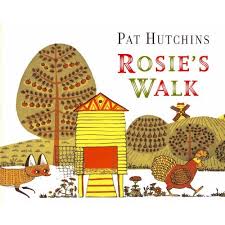
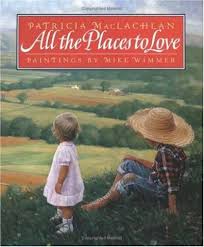
Craft Pause by Bonnie Cumbo
Teaching circular structure and setting up cause and effect in writing can be clearly seen in Laura Numeroffs famous books, If you give a Mouse a Cookie, If you give a Pig a Pancake, If you take a Mouse to the Movies, If you give a Moose a Muffin. All grade levels become engaged with these witty tales.

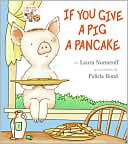
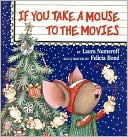
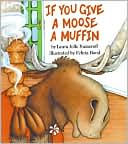
Renee Phillips Craft Pause for April 19th
Image Grammar
Using Image Grammar to help students make their writing better.
This past January I attended the SCCTE conference at Kiawah Island. I listened to Harry Noden and how he teaches grammar as part of the writing process. His lessons on Brush Strokes made so much sense and seemed like something that I thought our 4th and 5th grade students would enjoy and at the same time help them in making their own writing better. Using the action photographs the students practice writing a sentence that describes the picture. I chose to take one brush stroke each day as I introduced the concept to the students. Then after we has practiced the strategy with the photographs I had them choose one of their own writing and they had to apply at least two of the brush stokes to the piece. We also looked for them in real writing as well. We found that many of the better readers and writers already used the “brush strokes” without even being aware of them. We also found that it helped all of the students to revise in a more effective way.
The use of regional/native language in the text
Craft Pause for Heather Yordy on 4/19/10
Mentor List:
- · “One Foot in Eden” by Ron Rash (really anything by Ron Rash)
- · The Mitford Series by Jan Karon
- · “Esperanza Rising” by Pam Muñoz Ryan
- · “The Circuit” by Francisco Jimenez
- · Anything by Sandra Cisneros
- · “Schindler’s List” by Thomas Keneally
- · “Les Misérables” by Victor Hugo
Notice:
The regional/native language inserted within the text almost brings the reader into the text. It almost makes the reader part of the community. It draws the culture in and deepens the meaning. It makes the text more personal. For example, with “The Circuit,” the author easily could have simply said the border, but it makes it much more personal to use the native tongue. In “No Speak English,” Cisneros never explained that “Mamacita” is a term of endearment whereas “Mamasota” is a derogatory term that indicates a woman of large and plump physique. Yet, for one who is more familiar with the culture, that drove deeper meaning into the text.
CRAFT PAUSE- CREATING LEADS- KIM SUTHERLAND
Mentor list: 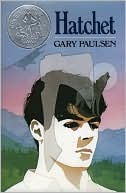
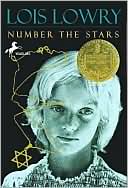
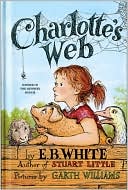
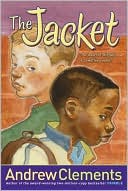
This craft pause focuses on writing good or sometimes known as hooks when writing. The above mentor text are great examples that Ralph Fletcher uses in his Craft Lessons book.
SAMPLE THAT USE LEAD/HOOKS IN THEIR WRITING
*** iNFO BELOW IS FROM Fletcher, Ralph. Craft Lessons. Stenhouses Publisher, 1998.
1. Posing a Question
Have you ever imagined what it would be like to play in the NBA? To glide down the court, matching strides with the greatest basketball players in the world? To hear the roar of the crowd as you throw down a dunk, or swat an opponent's shot in the bleachers? It's every kid's dream. And for the fortunate few who make it to the NBA, it's a dream come true.
2. Arresting Sentence
They murdered him.
3. Astonishing Fact
Try to imagine a star so big that it would fill all of the solar system within the orbit of Earth, which is 93 million miles from the sun. A star so turbulent that its eruption would spread a cloud of gases spanning four-light years, the distance from the Sun to the nearest star. A star so powerful that it glows with the energy of 10 million suns, making the brighest every observed in our galaxy, the Milky Way.
4. QUOTE/SPOKEN WORDS
"Your father has met with an accident."
5. Rich Description
A thin crescent moon, high in the skky, shed faint white light over Dimwood Forest. Stars glowed. Breezes full of ripe summer fragrance floated over nearby meadow and hill. Dimwood itself, veiled in darkness lay utterly still.
Ralph Fletcher says, " You can't wait for a paragraph in or a page in or even a line to gain the reader's attention. You've got to grab them by the lapels in the first paragraph, and by the end of the first page if you don't throw them across the room, you'll lose the reader."
When I teach leads I gather mentor text and we notice how the author gets our attention and sort the books accordingly. Also, when reading my daily read alouds we notice and discuss how the author crafted the first paragraph and we throughout the year write using all types of leads described above, so students will have the exposure to all types of hooks/leads.
Martha Vest
Craft Pause
The use of dialect and slang language in the text
Mentor List:
- · The Most They Ever Had by Rick Bragg
- The Mitford Series by Jan Karon
- · I know Why the Caged Bird Sings“ by Maya Angelou
- · Bamboo Beads by Lynn Joseph
Notice:
These writrings use much dialect and slang language to involve the reader. The slang amuses the reader and draws them in to the culture, making them a part of the conversation. For example, in At Home in Mitford by Jan Karon, a character named Fancy Skinner constantly uses slang and heavy dialect. She is so hilarious and I look forward to chapters featuring her.Uses:"tomater sandwich", "chicken with his head cut off", "the old by and by", "look like a sheared lamb", and "fit to be tied">
This gives readers from different areas a real feel for our North Carolina culture.
Another example is Bamboo Beads by Lynn Joseph
This tales features Papa Buis, a rough and wild character in the Caribbean.He speaks a mixture of French, Creole, and strange slang. "That's right chile." and "It's da sme ding I's uh tole ya."
In The Best They Ever Had by Rick Bragg:
Examples are "the hood up on a wore-out car" and "For fun, he walked the mountains in pitch dark, chasing coons acroos foot-logs....".
Comments (0)
You don't have permission to comment on this page.